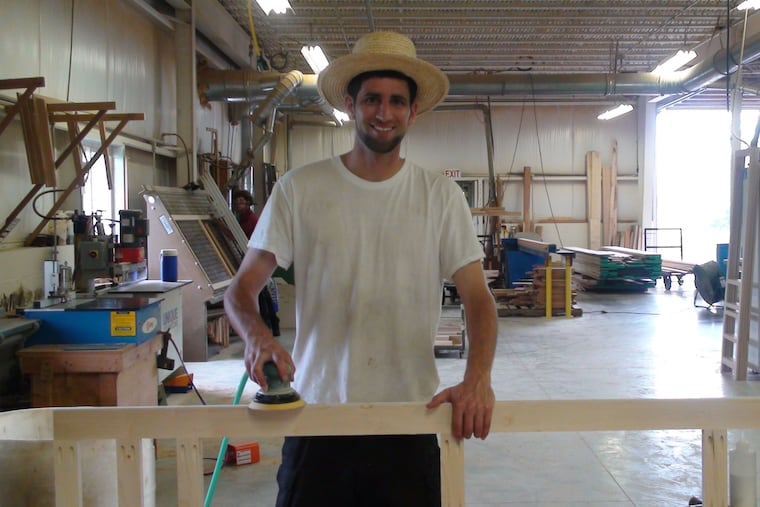Independence Day should mean independence from foreign goods
It's time for Philadelphia to show the world once again the importance of "American-made."

The recent supply-chain crisis, surging gas prices, record-high inflation, and conflicts abroad have most Americans feeling the strain — both emotionally and economically. There hasn’t been a more critical time to revive “American-made,” and remind people of what it means to go local.
As the “Birthplace of America,” Philadelphia forged a path of self-reliance that strengthened its community, and instilled local pride and identity. Leading up to the Revolution, the colonists boycotted British goods, and while local businesses suffered initially because of the lack of quality materials, people adapted for the sake of independence, and eventually thrived. We’ve since gone backward, relying heavily on foreign energy and manufacturing, causing us now to witness the vengeance of the global economy.
This Independence Day, let’s adopt the ethos of the early colonists and think local. We’ve always had an abundance of resources and a skilled labor force right here at home, and Philadelphia needs to once again be an example of reinstating our independence.
Over the last year, I decided to travel through every major city, learning about craftsmanship and the value that local artisans and farmers contribute to their communities. I shaped surfboards in San Diego, assembled cars in Detroit, rolled cigars in Tampa, sprayed graffiti in New York City, wood-carved crab mallets in Baltimore, pressed vinyl records in Cleveland, tooled leather boots in El Paso, and engraved an image of Mary Jackson, mathematician and aerospace engineer, on precious metals at the U.S. Mint in Philadelphia.
My main takeaway? America’s core is innovation, and the country remains an incubator of ideas. Timeless trades and rituals continue to shape our distinctive communities and culture. Cherishing artisanship has diminished in recent times, but we can reignite the benefits of supporting local products and services.
“What if we had everything we needed right around the block?”
Philadelphia showed me just how possible this is. I met with Betsy Ross (as the reenactment actress, of course) at her home in Old City to watch her sew the American Flag, used on the battlefields by the colonies united in rebellion against the crown. She was a master seamstress called to action, who attended a Quaker school followed by an apprenticeship. Locally raised. Locally educated. She left a legacy of work that symbolizes hope, strength, unity, opportunity, sacrifice, pride, and freedom.
During my stop at the U.S. Mint, established in 1792 as the first, I learned that it represented the growth and survival of an independent nation that needed its own monetary system. At the time, while foreign currency was circulating the colonies, the country was broke and people were leery of a strong federal government. But we didn’t give up: Martha and George Washington donated their own silverware to create the first half-dimes, and during my tour, Tim Grant, the director of public affairs at the U.S. Mint, told me that after three years, laborers working 5 a.m.-to-8 p.m. shifts, six days per week, had produced one million coins. Now, the U.S Mint can produce one million coins in 30 minutes.
I met with local medallic artist Renata Gordon, who has mastered her craft of sculpting images on clay and plaster that appear on the currency we see today. She modifies her own tools, specific to her needs, and after four to five weeks of refining images for a single design, the final product is breathtaking.
Like Betsy Ross, Renata was born and raised locally, educated at the University of Arts in Philadelphia; she then worked as an apprentice until she took on a full-time role at the U.S. Mint. Renata reminds me of so many people I met throughout the country, who are pouring their blood, sweat, and tears into making items with their own hands. This deeply personal work also creates a brand for their community, and influences the next generation of makers.
“American-made” represents more than products simply being manufactured domestically; it helps provide independence, creates healthier communities, and is ultimately more cost-efficient.
We all want to get things faster and cheaper. What if we had everything we needed right around the block? Think of that higher price tag of locally made products as a convenience fee, because in the bigger picture, we’re cutting down fuel costs, providing quality jobs, and promoting our neighbors’ prosperity.
This 4th of July, let’s stay authentic and resourceful — and appreciate those who have mastered their craft to better our community.
Daniel Seddiqui is an author and founder of Living the Map. He conducts outreach and education to raise awareness of the cultures, careers, and environments that make America unique.